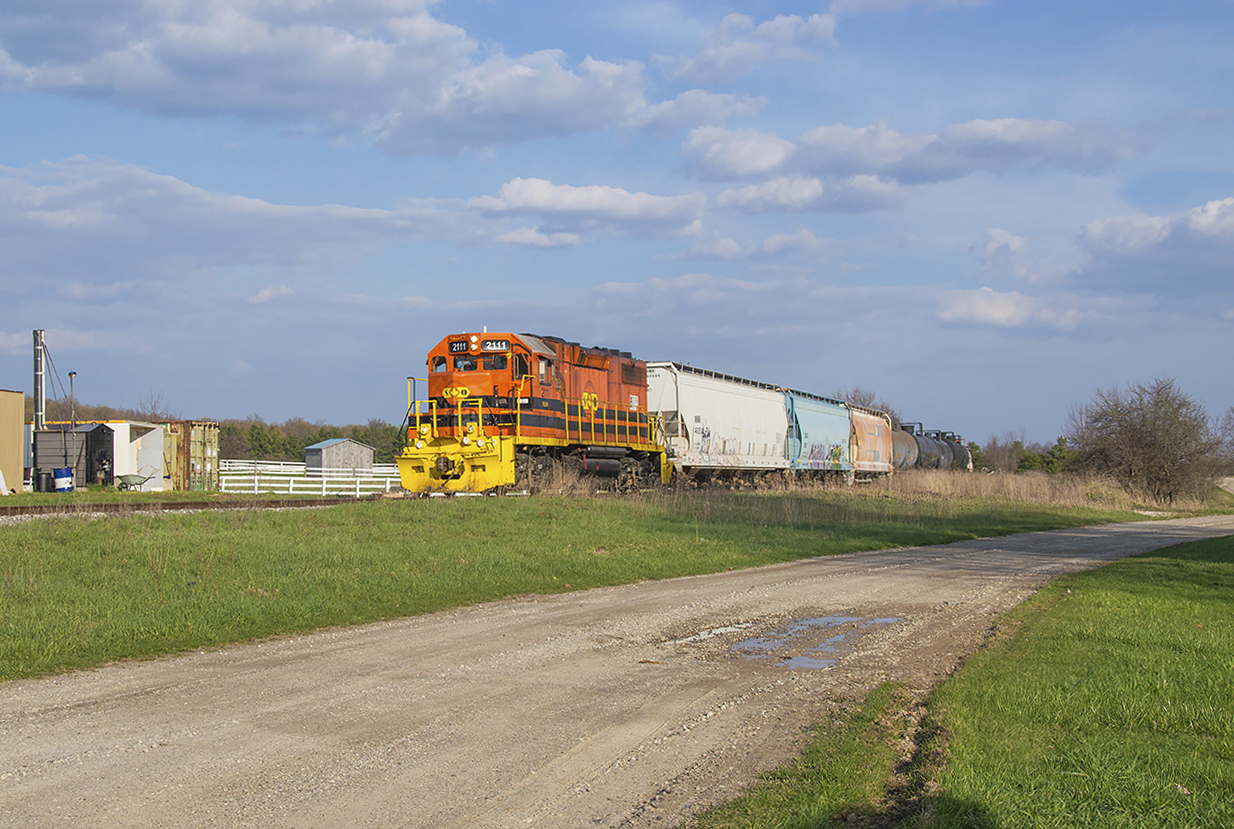|
Caption: GEXR 583 is seen trundling northbound from Guelph Junction with traffic for PDI and a car for Owens Corning Fiberglass third up passing through the hamlet of Corwhin at 1816h.
While Corwhin developed largely around the Guelph Junction Railway, its early years took place about 1 kilometer east of the rail line at the intersection of Wellington Road 34 and Nassagaweya-Puslinch Townline, right on the Puslinch and Halton border. The mid 1800s saw numerous settlers come to the area and the settlement of Corwhin was one of many nearby. It consisted of a church, blacksmith shop, and post office, though the village had never prospered as the only route to town involved a poorly built swampy road. The building of the GJR in 1887 changed that with reliable transportation to the area, leading to the post office and general store being moved closer to the railway. Under CPR operations the railway built a small station (a second being built circa 1911), used by high school students headed to Guelph, in addition to a house for the local section foreman, and a couple of sidings for use by the nearby coal yard and stock pens.*
Despite having a number of trips each day, Saturday, August 4, 1962 saw the end of passenger service on the GJR and as the station was no longer needed it was moved to a farm owned by Ontario's Provincial Secretary, John Yaremko. For a number of years passenger service was operated using a battery car, often CPR 9002, nicknamed "Old Sparky" by residents along the line. Sparky would be replaced by a gas-electric doodlebug, usually CPR 9004, in the 1940s until 1958 when steam powered mixed trains would take over the passenger service for its final years.
*Information from Puslinch Historical Society
|


